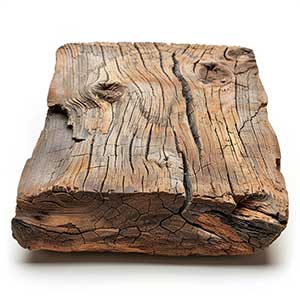Aged Wood is a term used in perfumery to describe the complex scent profile derived from wood that has undergone natural aging processes. This natural aging can result from prolonged exposure to elements such as air, moisture, and microbial activities which fundamentally alter the chemical structure of the wood, imbuing it with rich, deep, and often smoky or resinous aromas. These characteristics are highly valued in perfumery for their ability to add depth, warmth, and a sophisticated, earthy backbone to fragrances. Historically, the concept of using wood in perfumery dates back to ancient civilizations, including the Egyptians and the Romans, who utilized various forms of wood, such as cedar and sandalwood. The use of aged wood specifically capitalizes on the nuanced scents developed over years of maturation, a practice that has gained more defined popularity as perfumers seek to craft fragrances with a narrative or evocative of natural, organic decay and maturity. Aged wood in perfumes often connotes luxury and timelessness, resonating with notes of history and nature's cyclic processes. It is not typically available as an essential oil or absolute due to the difficulty and impracticality of extracting oil from deeply aged wood; thus, most aged wood scents in perfumery are achieved synthetically or through the use of other naturally wood-derived ingredients that mimic the scent profile of aged wood.
Natural or Synthetic?
Aged Wood scents in perfumery are typically achieved using synthetic means as extracting essential oils or absolutes from aged wood is highly impractical and often impossible due to the degradation of extractable compounds over time.
Fragrance Families Aged Wood Most Commonly Found In
Show fragrances that contain Aged Wood as a note


